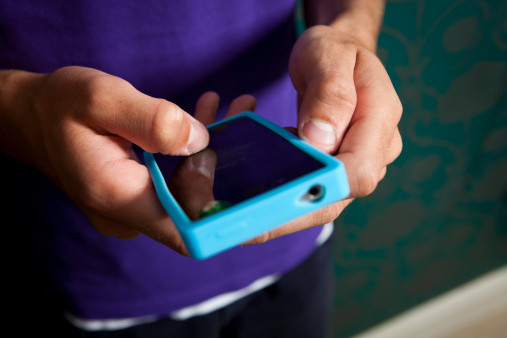Texting on smartphones can change the rhythm of brain waves, study shows
"There is now a biological reason why people shouldn't text and drive," Mayo Clinic researcher Dr William Tatum says.

For most people, text messaging has become the preferred method of daily communication between friends, family and colleagues over speaking on the phone and face-to-face contact. Tapping out those brief, rapid-fire texts on a smartphone or iPad, however, can actually alter the pattern of brain waves in some individuals, a recent study has found.
According to the study published by Mayo Clinic researcher Dr William Tatum in the Epilepsy and Behaviour journal, sending someone a text message or using an iPad can change the rhythm of a person's brain waves, creating a unique "texting rhythm" that has not been observed before.
"Because of advances in modern technology, smartphones and personal electronic devices (PEDs) are now a ubiquitous part of society involving a wide range of social, work-related, and recreational functions," the report says.
"However, while the use of smartphones has drastically increased within the past few years, little is known about their influence on neurophysiological processes."
Over a period of 16 months, a team of Mayo Clinic researchers led by Tatum analysed the brain wave data of 129 volunteers, with and without epilepsy, using video-EEG monitoring to observe the way our brains work while texting on our smartphones.
At least one in five participants using their smartphones to text exhibited significant neurological change with researchers detecting what they called a "texting rhythm". The participants were asked to perform a range of activities including text messaging, finger tapping and talking on the phone. However, the only activity that seemed to generate the unique rhythm was texting.
"We believe this new rhythm is an objective metric of the brain's ability to process non-verbal information during use of electronic devices and that it is heavily connected to a widely distributed network augmented by attention or emotion," Dr Tatum said in a press release.
The researchers also noted that there was no correlation between the observed texting rhythm and the patients' demographics including age, gender, type of epilepsy and presence of a brain lesion on MRI or ictal EEG.
However, the researchers did observe the texting rhythm in iPad users which they say could be due to the use of smaller screens which require more concentration on the user's part. Although using an iPad or sending someone a quick text may not be a strenuous task, focusing one's eyes on a small screen while using the finger deftly to form a brief yet complete sentence or series of messages does seem to alter the way the brain works while completing the task.
According to Tatum, much more research is required to further examine the phenomenon. However, it could potentially provide deeper insight into effects of technology on humans' neurological processes and have "significant implications for brain-computer interfacing, gaming, and driving".
"There is now a biological reason why people shouldn't text and drive - texting can change brain waves," Tatum said. While "there is still a lot more research needed, we have begun to unravel the responses generated by the brain when it interfaces with computerised devices".
© Copyright IBTimes 2025. All rights reserved.





















